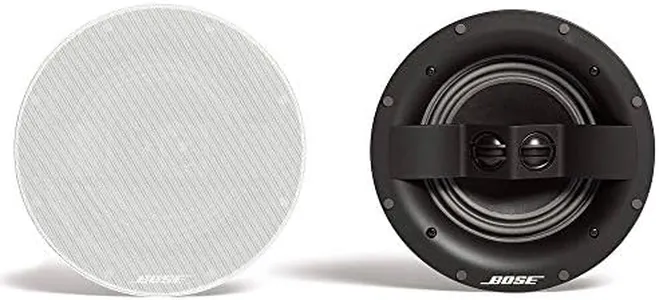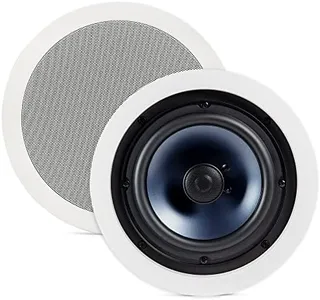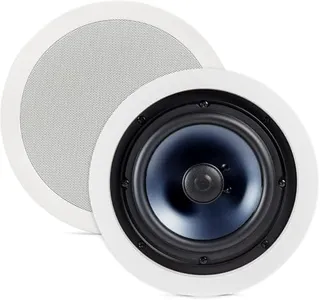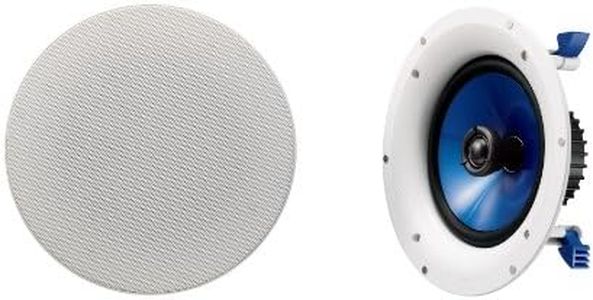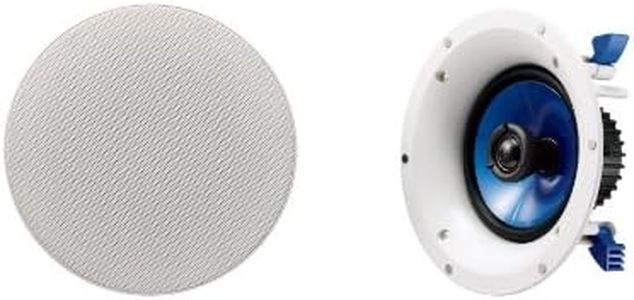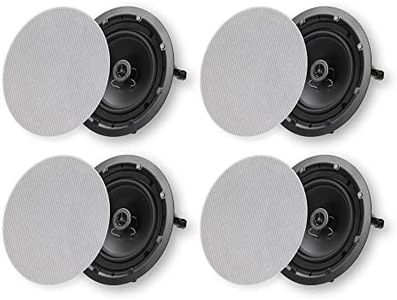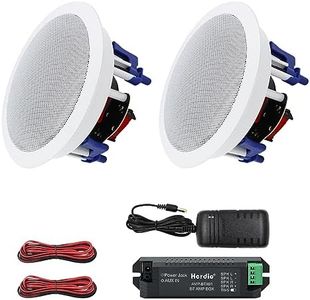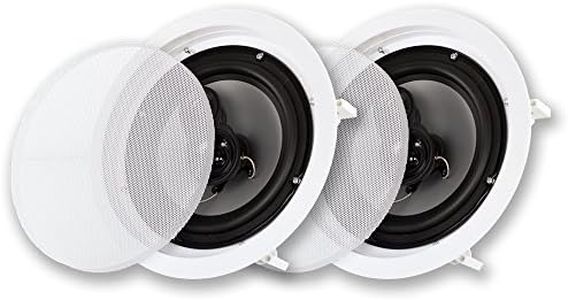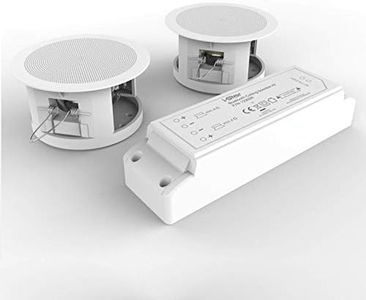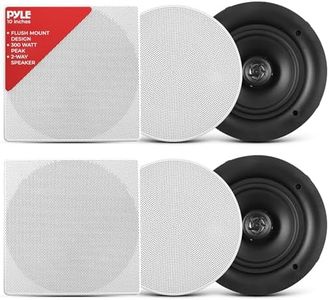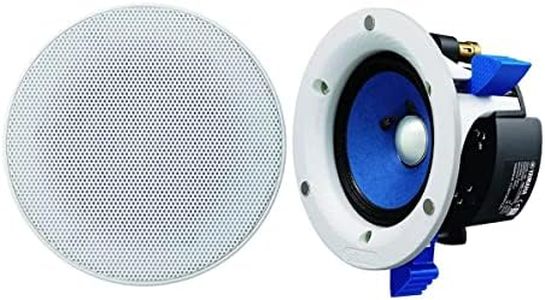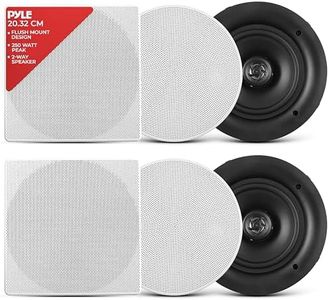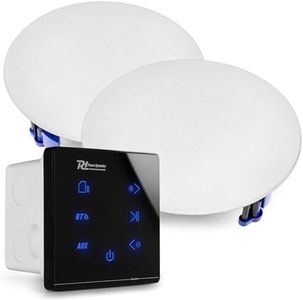We Use CookiesWe use cookies to enhance the security, performance,
functionality and for analytical and promotional activities. By continuing to browse this site you
are agreeing to our privacy policy
10 Best In Ceiling Speakers
From leading brands and best sellers available on the web.Buying Guide for the Best In Ceiling Speakers
In-ceiling speakers are a great solution if you want to enjoy music, home theater sound, or announcements without having visible speakers taking up space. They are installed flush with your ceiling, providing a clean, neat look while spreading sound throughout the room. When choosing in-ceiling speakers, it's important to match them with your listening habits, room size, and the purpose they will serve. Understanding key features will help you find a pair that delivers the sound quality you want and integrates well with your living space.Speaker Size (Diameter)The size of the speaker, often measured in inches (like 6.5” or 8”), refers to the diameter of the main driver. Larger speakers generally produce deeper bass and can fill bigger spaces with sound, while smaller speakers are good for background music or smaller rooms. Think about your room size and how loud or full you want the sound: bigger rooms or home theaters benefit from larger diameters, while bedrooms or hallways can make do with smaller models.
Power Handling (Wattage)Power handling tells you how much power the speaker can handle from an amplifier without being damaged, usually shown as RMS (continuous power) and peak (short bursts). Higher wattage speakers can play louder and handle demanding music or movie scenes. For background music, you may not need high wattage, but for lively parties or home theater, look for speakers with higher RMS ratings that match your amplifier capabilities.
SensitivitySensitivity, measured in decibels (dB), indicates how effectively a speaker converts power into sound. A higher sensitivity rating means the speaker will play louder with less power, which can be important if you have a weaker amplifier or want more volume. Below 85 dB is considered low sensitivity, 86-89 dB is average, and 90 dB or above is high. If you need more loudness without upgrading amps, choose a speaker with higher sensitivity.
Frequency ResponseFrequency response describes the range of sounds the speaker can produce, from the lowest bass to the highest treble, given in Hz (like 45Hz – 20kHz). A wider frequency response means the speaker can deliver more complete sound, with deeper lows and clearer highs. If you want rich, full music or detailed movie soundtracks, look for a broad frequency range, but for background audio, this is less critical.
Speaker Type (2-way vs. 3-way)A 2-way speaker has two drivers (a woofer for bass and a tweeter for highs), while a 3-way adds a midrange driver for even more clarity in vocals and instruments. 3-way speakers offer better detail and balance, which is ideal for critical listening or home theaters, whereas 2-way speakers are often good enough for general music or background sound in most spaces.
Pivoting or Aiming TweetersSome in-ceiling speakers come with tweeters that can be angled or aimed toward the listening area. This helps direct the high-frequency sounds to where you sit, making music or dialogue clearer, especially if the ideal spot for installing the speaker isn’t directly above your listening position. Choose a speaker with adjustable tweeters if room layout or exact placement is tricky.
Moisture ResistanceMoisture resistance makes a difference if you’re installing speakers in bathrooms, kitchens, or outdoor ceilings. These speakers are built to handle humidity and occasional splashes, preventing damage and keeping sound quality consistent. If your installation spot is exposed to steam or dampness, opt for moisture-resistant or weatherproof models.
Installation Depth and Ceiling CompatibilitySpeakers require a certain amount of space behind the ceiling to fit properly, called installation or mounting depth. Check your ceiling’s available depth and any obstructions like pipes or ducts. Shallow-mount or low-profile speakers are available for tight spaces, while deeper models may offer better bass if you have room.
Grille Style and PaintabilityThe grille covers the speaker and can be round or square, depending on your decor preference. Many grilles can be painted to match your ceiling, making the speakers less noticeable. If appearance matters, choose speakers with paintable, flush-mount grilles that blend into your ceiling seamlessly.
